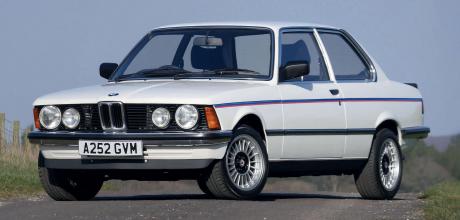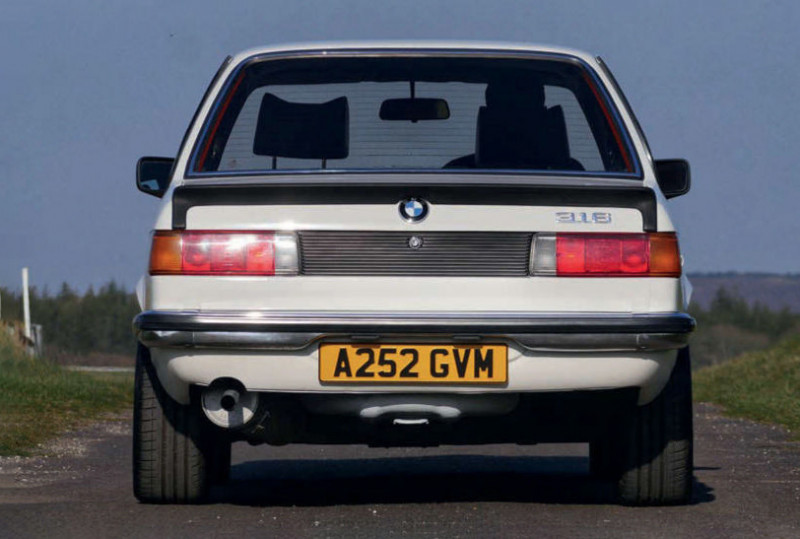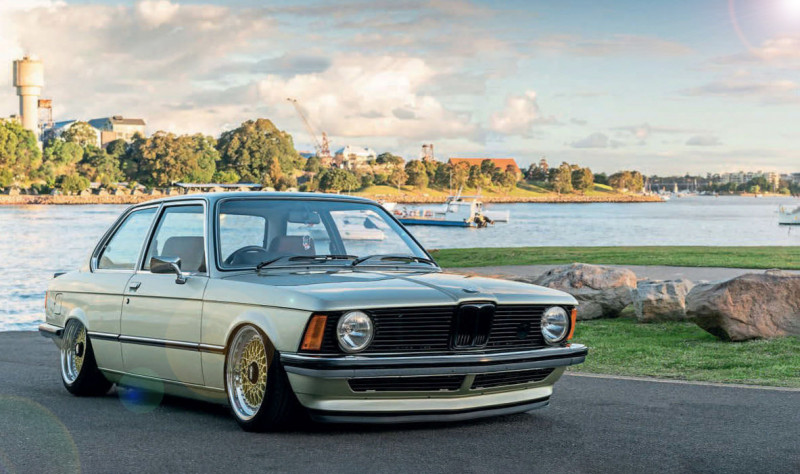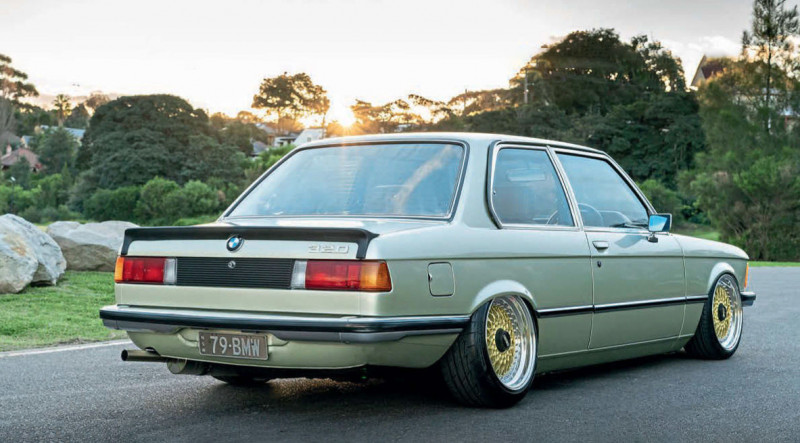Buying Guide BMW E21 3 Series

It’s now 48 years since the original E21 replaced the much-loved ’02, itself one of the two ranges that saved BMW, and the first-gen 3 Series makes for an alluring used buy that won’t break the bank.
Words: Andrew Everett
Photos: Felix Bluethner Iconized Ltd, Aaron Lam
Buying Guide: BMW E21 3 Series
The first-generation 3 Series is a classic icon and it makes for an excellent retro purchase, with prices still relatively reasonable. Our in-depth guide will help you find the perfect example.
The 1975 E21 3 Series was the logical evolutionary step in the BMW master plan. Rivals Alfa Romeo and Lancia had both replaced their ’60s cars with bigger, heavier and more expensive models with much success, so BMW was going to do the same. The E12 5 Series was the first, and the E21 was followed by the E24 6 Series in 1976 and the E23 7 Series the following year. The E21 was a car that was slightly bigger than the 2002, not quite as fast, and not quite as good to hustle along. But to address the weaknesses of the 1502-2002 range it was quieter, softer-riding, better on fuel and better-looking inside and out, trading the somewhat boat-like appearance of the ’02 for something far more modern, with a vastly improved interior and that fabulous dash that began life in the E12.

History
Taking nothing from the ’02, the monocoque bodyshell was all new, and so was the suspension, even though it followed the standard BMW format of McPherson front struts and independent angled semi-trailing arm rear suspension. The E21 also used rack and pinion steering, and the old steering box was replaced at last.
BMW revamped the good-old M10 four-cylinder engine, 13 years old at that point, but fighting fit. For the E21, it received new combustion chamber and piston designs; the 1573cc version with 90hp powered the twin-headlamp 316, and the 1990cc unit powered both the four-headlamp 109hp 320 and the 125hp 320i. Rather than the old Kugelfischer injection system of the 130hp 2002 tii, the 320i fuel injection system was the modern Bosch K-Jetronic setup. Transmissions were either a Getrag 242 four-speed with an optional ZF three-speed automatic or a five-speed close ratio Getrag available on the 320 and 320i. The first road tests agreed that the 3 Series was an overall improvement over the 2002 with some provisos over the handling. In early 1976, the spring and damper rates were revised to counter this criticism. As cars, the 316 was fussy and undergeared at speed, and the 320i was very expensive at £4700 when a Ford Capri 2000 cost under £3000. The carb-equipped 320, at £4000, seemed to offer the best compromise, though, being a brisk, nice-driving, and very nicely finished two-litre two-door that was superbly made – don’t forget how shoddily-made mass-produced cars were back then.

The E21 options list was a bit sparse; electric windows and central locking would never be offered, and while a five-speed overdrive gearbox arrived in 1980, Bilstein sport suspension and a limited-slip diff – as well as power steering later on – would improve the driving experience, particularly the later 323i. In late 1977 for the 1978 model year, the 320 M10 engine was replaced by an all-new six-cylinder M60 unit with the same 1990cc capacity. Smoother but heavier on fuel than the outgoing four-pot, the M60 (renamed M20 for the 1982 E30) was a typical BMW design, being a canted-over iron block unit with an alloy crossflow head and a single overhead cam with hemispherical chambers. The timing chain was replaced with a toothed rubber belt, and there was no fuel injection version – this was a carburettor-only model featuring a Solex 4A1 DVG four-barrel carb. It sounded nice and delivered a smooth 122hp, but the top model was the 323i, a new 2315cc Bosch K fuel-injection version of the new straight-six with 143hp, uprated suspension, vented front disc brakes, with rear discs replacing the drums, and twin outlet exhausts. The 323i arrived here in early 1978, and options included Bilstein sport suspension plus the essential limited-slip differential. This should have been standard, as the 323i suffered from abysmal traction in the wet and very scary handling tricks. In the days when BMW charged for every extra, power steering, Recaro seats and air conditioning, as well as a steel sunroof, made your £6500 323i a £7200 car. The 320’s electric cooling fan was replaced in 1979 by the same viscous coupled fan as the 323i, and the rotary heater controls replaced the sliding levers the same year, at which time there were changes to the trim. The 316 was given the 318’s 1766cc engine with a new Pierburg carburettor and an optional five-speed gearbox – the 320 and 323i began to be fitted with standard five-speed ’boxes for the 1981 model year. All 316s gained the 6”-wide steel wheels from the 320/323i, and more trim changes occurred in late 1981. By 1982, the all-new E30 was ready to go, and the E21 was gradually phased out, but the E21 316 stayed on in limited production until September 1983, selling alongside the new E30 but at a cheaper price. Baur of Stuttgart launched a Cabriolet conversion in 1979, and quite a few were done using whatever E21 was delivered – most seemed to be the 320 model.

Our Choice
If you’re planning on using it every day, then a 316 with the five-speed gearbox is ideal – it’s brisk enough around town and not tragic on fuel. The 323i is very lively, of course, but not that quick on the open road. When even an E30 325i can be outdone by many modern diesels, you might just find the 323i a bit of a letdown, plus, they are expensive now, and they really do need tyres with excellent wet grip. We think the six-cylinder 320 could be the one to have. They sound fantastic with the smoothest of all E21 engines, plus with 122hp, they’re not slow.
What to Pay
Hard to say, but values have certainly risen – not quite to silly E30 levels, though. A very nice six-cylinder 320 should cost about £10,000, and 323is are a lot more money, of course. The best ones are found in Europe where there are more unrestored gems. You will easily pay 20 grand and change for such a car. Over here, a really good 323i manual will make around £15,000 or more and cars with the desirable options – limited slip diff, Recaro seats and the sport gearbox – are again going to be £20k upwards.

The 316s are a bit less, as are early four-cylinder 320/320i cars. Never common when new, they are very rare but not worth any more than a six-cylinder 320. Autos fetch less than manuals, as do Baur Cabriolet models; these are harder to value, but as 323is, they are certainly worth less than the saloons.
What to Look For
BODY AND CHASSIS
The E21 may well have been well-finished, but the last one was built when Soft Cell was going the first time around. Most have now long gone to Valhalla, with rare survivors being either low-mileage minters, restored gems, or projects in need of saving. The E21 rusts well: sills, rear arches, front wings, front chassis legs, boot floor corners, sunroof panel and jacking points, as well as the rear axle mounting points and the rear panel around the tail lights and boot seal. The front strut towers rarely rot, but the back ones do and check the inner wings where the front panel joins. Also, check where the B-pillar meets the rear wing, as they can stress-crack here. New panels are just about available but are of course getting thin on the ground, with some sellers having interesting ideas on their value. Overall, it’s a pretty standard ’70s body design, nowhere near as rot-prone as a similar-era Ford, and made of good enough steel to be quite simple to repair, but, so far, it’s only really the 323i that is worth enough to warrant a major restoration. The doors and boot lids don’t often rot, but the clamshell bonnet can rust along the seams, and good ones are rare.
Nice chrome bumpers are now very hard to locate, and many original cars will need a replacement section or two if you want the car perfect. A front centre section alone will cost over £300, and just one bumper corner the same. When you consider an E36 front bumper is worth its weight in scrap plastic, that’s an eye-opener.
ENGINE
The E21 has two engine ranges, the M10 four and the M60 six. Starting with the M10, this is often regarded as bulletproof, but it’s not unless it’s religiously maintained. Given regular oil and coolant changes, it will rack up 100k or more, but few have been treated so well, and with low gearing, the four-speed cars work pretty hard. The main problems are corroded alloy head coolant passages that eventually eat into the head gasket fire ring, valve guide wear leading to a noisy top end and blue oil smoke on the overrun. Then we have the perennial camshaft wear. This is caused by neglecting the camshaft oil spray bar, and these need to be cleaned out every time you adjust the tappets, and the camshaft will live longer, sparing you an expensive and surprisingly difficult top-end rebuild.
Low oil pressure can be a generally knackered engine, but can also be the tiny O-ring on the steel pipe from the front oil gallery to the oil pump – that’s a sump- and front timing cover-off job. A general thrashy rattle from the top front will be a worn-out cam sprocket, very common on post-1980 1800 engines with the Simplex timing chain. This is a simple and cheap fix, though – a new sprocket and a new spring in the chain tensioner will sort it. These chains are very tough, though, unlike modern rubbish. 316 and 320/4 carburettors were okay, being basically older 2002 type Solexes, but later Pierburgs from 1980 are ghastly things best replaced with a Weber. Water pumps are fine, and a well-maintained M10 is a very good engine, if reliant on regular maintenance. The M60 engine in the 320/6 and 323i is equally good or bad. The 323i engine was always quite harsh by BMW standards (the 320 is much smoother), and in the early days, they were both notorious for cracking cylinder heads, the crack occurring under the cam bearings and into the coolant passage below. This resulted in oil and water mixing, often misdiagnosed as a failed head gasket.
These heads – the same on both units – have a casting number ending in 200, and good ones are rare now. However, the later E30 320i M20 head will fit, and the casting number ends in 731. It has the same valves and chambers but bigger inlet ports – the E21 inlet manifold fits perfectly, though, and a complete E30 head fits straight on with the E21 cam pulley. Be aware that the E28 525e also had a 200 head, with only four of the bearing holes drilled. 1977-1981 engines had square-tooth cam belts, although BMW supplies both. The same camshaft wear caveats apply, although the spray bar banjos are built-in and far better. The bottom end rarely gives trouble. The six-pot 320 uses a Solex 4A1 DVG quad-choke carburettor that is as dreadful as it sounds and is very unreliable in old age and often impossible to fix – replace this with a 32/36 Weber. The 323i K-Jetronic was also used on the original 320i and is good when it works… but parts are drying up. There also isn’t much knowledge about now on this system, and given that you can buy a good complete post-1988 E30 325i engine with Motronic for around £700, it’s often worth just replacing the whole engine for this reliable 171hp unit. The fuel pump sits next to the differential under the back of the car, and the ‘bird’s nest’ of metal pipes can rust, and you normally are best to replace the whole lot. The cooling system is simple but requires a good radiator and viscous fan coupling if it’s not to overheat – on the sixes, fit a new water pump with every cam belt, they’re only £40 or so.
TRANSMISSION
The E21 had both four- and five-speed boxes, with the five-speed units only really appearing after 1980. M10 and M60-type gearboxes don’t interchange. As with flexi brake hoses that lead to dragging brakes, an internally collapsing clutch hose results in clutch failure, with the release bearing overheating and seizing before punching through the diaphragm. A clutch is easy to replace, and the parts are cheap enough. Propshaft giubo rubber ‘doughnut’ couplings and centre bearings are old enough to need replacing, but it’s simple DIY. The ZF 3HP three-speed automatic is a very reliable unit, and an occasional change of ATF Dexron II fluid keeps them healthy. E21 diffs rarely give trouble, but 323i LSD-equipped units are very rare and expensive.
SUSPENSION, STEERING AND BRAKES
The E21 suspension is simple, and it’s the usual old car stuff – tired bushes, ball joints and leaking dampers, and none of those is expensive or difficult to change. The rear axle beam bushes are bolt-on rather than pressin, which makes life easier. Brakes? Early four-cylinder cars built up to August 1977 used 2002-style twin remote servos, and you won’t find any new ones when they fail – the seals leak, and brake fluid enters the air chamber. You can replace them with new Lockheed MGB-type servos with new brake pipes having metric unions on one end and imperial on the other. Ideally, replacing them with the later single servo with a combined master cylinder setup is a better idea. Front brakes are twin-piston fixed calipers with rear drum brakes on the 316 and 320 cars, with manual adjusters that love to seize solid. The manual steering rack rarely gives trouble, but good, used power racks are now hard to find, with lots being too worn to rebuild.
INTERIOR AND ELECTRICS
The E21 is about as complex as a three-pin plug, with a simple wiring loom and very little to go wrong. Being old-school, made in West Germany Bosch stuff, it can last forever, although beware the hazard warning switch as it is a weak point – they were known to short out and even causes a fire. As they are available new, it’s worth buying a new one as a matter of course. The interior is simple and tough, although a wornout driver’s seat is a common problem. Original cloth to repair a tired seat is now hard to find, especially for early cars. See if you can find a good passenger or rear seat and use the covers, or trim sections from that. Recaro seats were an option and mainly found on the 323i, but they’re simple to retrim by a good trimmer. Carpets are very tough, and with manual locks and wind-up windows, there is almost nothing else to go wrong.
VERDICT
As a car, the E21 is very good, a solidly-built classic BMW from an era when stuff was simple and built to last a decade or two. The driving experience isn’t that dissimilar to an E30, plus the E21 is simpler and just that bit rarer. The only problem now is that they are expensive – even the basic 316 costs well over £10,000, and most E21s for less are in a parlous condition. Whether they are actually worth that is down to you – the smart money might just be in an E36 Compact instead.
Interiors are tough and simple, with little to go wrong. The E21 has a 4x100 PCD, which limits wheel choice, but there are some nice options out there. The E21 isn’t as well catered for in terms of modifications as the E30, but there are some tasteful upgrades available.

